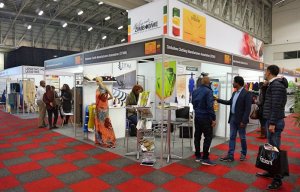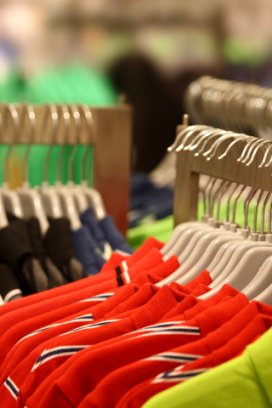
Messe Frankfurt intensifies its involvement in Africa
Retail demand for clothing in South Africa has expanded significantly since the world recession, according to a new report from the global business information company Textiles Intelligence – Prospects for the Textile and Clothing Industry in South Africa. But the main beneficiaries have been foreign suppliers rather than the industry in South Africa itself. The retail sector in South Africa has expanded as a result of an improvement in the distribution of goods and the development of suburban shopping centres, and a stimulation of consumer demand stemming from low interest rates, real wage increases, increases in government subsidies and low inflation.

11th February 2014
Innovation in Textiles
|
UK
Retail demand for clothing in South Africa has expanded significantly since the world recession, according to a new report from the global business information company Textiles Intelligence – Prospects for the Textile and Clothing Industry in South Africa. But the main beneficiaries have been foreign suppliers rather than the industry in South Africa itself.
The retail sector in South Africa has expanded as a result of an improvement in the distribution of goods and the development of suburban shopping centres, and a stimulation of consumer demand stemming from low interest rates, real wage increases, increases in government subsidies and low inflation.
However, the main beneficiaries of the expansion in retail demand have been foreign suppliers located mainly in Asia and other countries in Sub-Saharan Africa.
In fact, South African clothing imports increased by 53.5% between 2008/09 and 2012/13, from R8,079 million to R12,399 million (US$1,457 million).
China, Mauritius and Madagascar were the sources of 99.8% of the growth of imports into South Africa in absolute terms over the four-year period. Imports from China grew by 59.0%, imports from Mauritius soared by 188.9% and imports from Madagascar surged by a staggering 644.7%.
South Africa’s domestic clothing industry, on the other hand, has consolidated substantially in recent years as factories have been closed and workers have lost their jobs. At the same time, a number of the larger manufacturers have sought to preserve their market shares by forging financial links or strategic alliances with the major South African retailers.
But in spite of declines in the numbers of clothing factories and employees, output by the clothing industry reached its highest level for at least ten years in 2012, reflecting a sharp rise in labour productivity.
The South African government has recognised that the textile and clothing industry has the potential to become a significant employer within the country’s manufacturing sector. Consequently, the government is pursuing policies to stop the decline of the industry and facilitate its growth.
To this end, it has supported the development of textile and clothing industry clusters -- by helping with investment in infrastructure and implementation of best practice. Also, it provides incentives through the Competitiveness Improvement Programme (CIP) and the Production Incentive Programme (PIP).
Furthermore, there is potential for the development of quick response and fast fashion models in the South African clothing industry, and the country’s strong retailing sector provides a platform for exporting to other African countries.
‘Prospects for the Textile and Clothing Industry in South Africa’ was published by the global business information company Textiles Intelligence and can be purchased by following the link below:
Prospects for the Textile and Clothing Industry in South Africa
Other recently published reports from Textiles Intelligence include:
Survey of the European Fabric Fairs for Autumn/Winter 2014/15
Textile Outlook International: Trends in World Textile and Clothing Trade (December 2013)

Business intelligence for the fibre, textiles and apparel industries: technologies, innovations, markets, investments, trade policy, sourcing, strategy...
Find out more